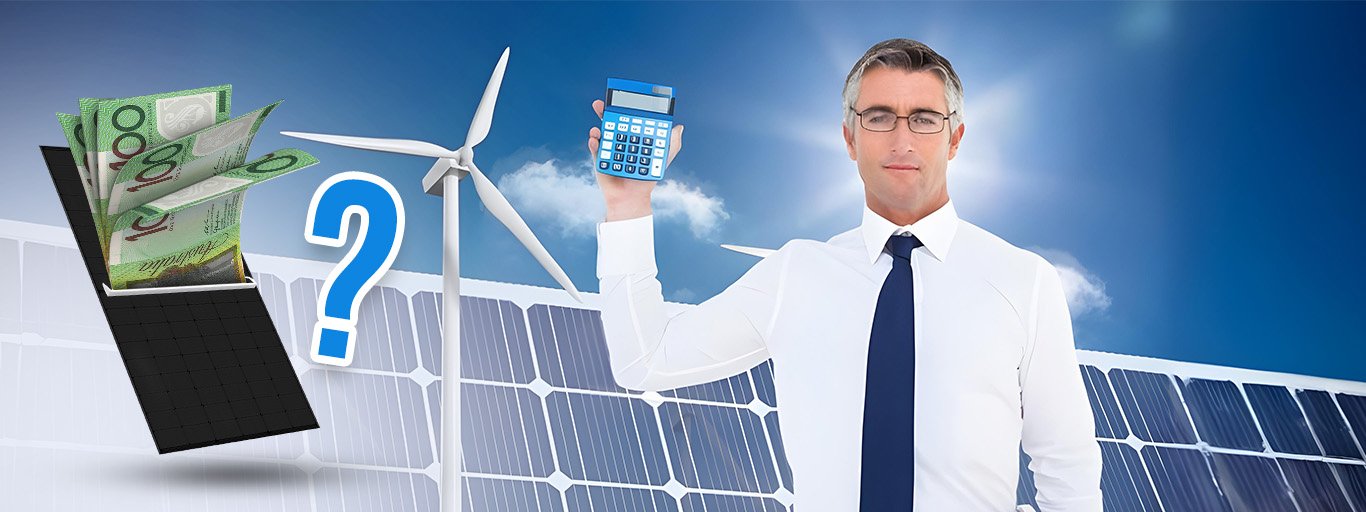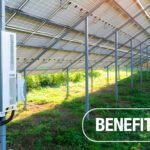As of 2025, the average cost for a 6.6kW solar system in Australia ranges between $5,000 and $8,500 after government rebates . This price variation depends on factors such as system size, panel quality, and installation With over 4 million Australian homes equipped with rooftop solar panels, the nation continues to lead in solar energy adoption .
Understanding the costs involved in solar panel installations is crucial for homeowners considering this sustainable energy
Average Solar Panel Cost in Australia (2025)
When considering solar panel installations in Australia, cost is often the first concern. On average, a standard 6.6kW solar system costs between $5,000 and $8,500 after applying the federal government’s STC (Small-scale Technology Certificates) rebate. This range reflects pricing in major cities like Sydney, Melbourne, Brisbane, and Perth, where competitive solar markets and established installers help keep costs low.
Prices can differ depending on location, with regional or remote areas often incurring higher installation fees due to logistics and fewer service providers. Here’s a general breakdown of average costs based on system sizes:
System SizeAverage Cost (Post-Rebate)Est. Daily Output
3kW $3,000 – $4,500 12 kWh
5kW $4,000 – $6,000 20 kWh
6.6kW $5,000 – $8,500 26 kWh
10kW $8,000 – $12,000 40 kWh
How much do solar panels cost in Australia in 2025?
As of 2025, a typical 6.6kW solar panel system in Australia costs between $5,000 and $8,500 after rebates. This price includes panels, inverter, and standard installation, with costs influenced by brand, installer, and your location.
Factors Affecting Solar Panel Cost
The cost of solar panels in Australia varies widely based on several critical factors that go beyond just the price tag of the panels themselves. These include the system size, panel and inverter quality, roof characteristics, installer expertise, and available government incentives.
- System Size: Larger systems cost more upfront but usually offer a better price-per-watt ratio. For example, while a 3kW system might cost $4,000, a 6.6kW system at $6,500 delivers significantly more output per dollar spent.
- Panel and Inverter Brand: Premium brands like SunPower and REC come at a higher price due to better warranties and higher efficiency. Budget brands offer cheaper options but may not perform as well over time.
- Roof Complexity: If your roof is steep, shaded, multi-story, or made of delicate materials like terracotta, installation will be more complex and costly. Mounting hardware, safety gear, and additional labour can raise installation costs by hundreds of dollars.
- Installer Reputation and Experience: Highly rated, accredited installers often charge more but provide better workmanship, compliance with safety standards, and system performance guarantees.
- Government Rebates & STCs: The federal STC rebate reduces solar costs significantly. The rebate amount depends on your location and system size. State-specific rebates or interest-free loans may also be available, further lowering your net expense.
What affects the cost of solar panel installation?
The cost of solar panel installation is affected by system size, panel quality, roof complexity, installer experience, and eligibility for government rebates. These factors determine both the upfront cost and the long-term value of the system.
Solar Panel Installation Costs Explained
Installation is a major component of the total solar panel cost, often accounting for 15% to 30% of the system’s final price. A professional solar installation in Australia typically includes design, site inspection, mounting, electrical work, grid connection, and final testing.
Here’s what’s generally included in solar installation pricing:
- Labour Costs: Certified installers and electricians are required for safe, compliant work. Labour rates vary by state but average between $1,000 and $2,000 for standard homes.
- Mounting & Hardware: Custom mounting kits ensure panels are securely attached and angled correctly. Special roofing materials or multi-roof setups can increase this cost.
- Inverter Setup & Wiring: Connecting your inverter and ensuring it complies with energy provider regulations adds to the complexity.
- Grid Connection & Compliance: Installers manage the connection to the electricity grid and complete documentation for government rebates and warranties.
It’s important to choose a Clean Energy Council (CEC) accredited installer to ensure compliance with Australian standards and to be eligible for rebates.
What is included in solar panel installation costs?
Solar panel installation costs in Australia include labour, mounting hardware, inverter setup, grid connection, and regulatory compliance. These services typically make up 15% to 30% of the total solar system cost, depending on your roof and installation complexity.
Are Solar Panels Worth It in 2025?
Yes, for most Australian households, installing solar panels in 2025 remains a highly worthwhile investment. With electricity prices climbing and solar system prices stable or falling, the return on investment (ROI) is stronger than ever. A 6.6kW solar system typically pays itself off in 3 to 5 years, depending on energy usage and feed-in tariffs.
Here’s why solar is still a smart financial decision in 2025:
- Electricity Bill Savings: Households can slash their power bills by up to 70% when systems are correctly sized and energy usage is optimised during daylight hours.
- Feed-in Tariffs: While state rates have dropped, you can still earn credits by exporting excess power back to the grid, which helps offset night-time usage.
- Long-Term Savings: Quality systems last 20–25 years. Even modest daily savings add up to tens of thousands of dollars over the system’s life.
- Environmental Impact: A typical solar system offsets more than 250,000kg of CO₂ over 25 years — the equivalent of planting thousands of trees.
Are solar panels a good investment in 2025?
Yes, solar panels remain a good investment in Australia in 2025, offering payback periods of 3 to 5 years and potential long-term savings of over $30,000. With stable system prices and rising electricity costs, solar continues to deliver strong financial and environmental value.
How to Get the Best Value from Your Solar Investment
Getting the best value from a solar system isn’t just about buying cheap panels — it’s about selecting reliable components, matching the system to your energy habits, and choosing a reputable installer. Here’s how to maximise your return:
- Choose Quality Over Price: Budget systems may save you upfront, but quality systems with better warranties offer lower maintenance costs and longer performance. Aim for Tier 1 solar panels and trusted inverter brands.
- Size the System Correctly: A system too small won’t meet your needs, while an oversized one may lead to low feed-in returns. Review past energy bills and discuss your future energy use (e.g., EVs, air-con upgrades) with your installer.
- Use Appliances During the Day: Run high-consumption appliances (dishwasher, washing machine, hot water system) while your system is generating power. This reduces the amount of power you buy from the grid.
- Track Performance: Use a monitoring app or portal to track your system’s output. Sudden drops in performance can be a sign of dirt, shade, or faults that need attention.
- Check Warranties: Look for a minimum 10-year product warranty on panels and 5-10 years on inverters. Installation warranties should be 5 years or more.
How can I get the best value from my solar panels?
To get the best value from your solar panels, choose quality brands, match the system size to your energy needs, use appliances during the day, and monitor performance. Reliable installers and strong warranties also ensure long-term savings.
Government Rebates and Incentives in 2025
In 2025, government support continues to make solar panel installations in Australia more affordable. The federal STC rebate remains the primary nationwide incentive, reducing upfront system costs by $2,000 to $4,000 depending on your location and system size.
Here’s a breakdown of available rebates and schemes:
- STC Program (Federal): The Small-scale Renewable Energy Scheme (SRES) issues STCs based on your solar system’s output over 15 years. These STCs are sold to energy providers, reducing your installation cost.
- State-Specific Programs:
- Victoria: Still offers interest-free loans (up to $1,400) and rebates through Solar Victoria.
- New South Wales: Low-income households may access free solar or home energy upgrades under the Energy Savings Scheme.
- Queensland: A new battery rebate and solar interest-free loans are available under the Queensland Solar for Rentals and Homes initiatives.
- Feed-in Tariffs: Most states offer feed-in tariffs ranging from 5 to 12 cents/kWh for excess energy exported to the grid. Though lower than retail rates, they still contribute to bill savings.
What solar rebates are available in Australia in 2025?
In 2025, Australians can access the federal STC rebate worth up to $4,000, plus additional state-based incentives like interest-free loans and battery rebates. These programs reduce the upfront cost and improve solar affordability across the country.
Conclusion
Installing solar panels in Australia in 2025 remains a financially sound and environmentally responsible choice. With system prices stabilising and generous government rebates still in place, homeowners can secure a quality 6.6kW system for as little as $5,000. By selecting reliable installers, using energy wisely during the day, and taking advantage of rebates, most households can achieve payback within five years — and enjoy decades of reduced power bills.
Whether you’re in the suburbs of Sydney or a regional Queensland town, solar continues to offer a practical path to energy independence and long-term savings. And with energy prices expected to remain high, there’s no better time to lock in the benefits of solar than now.



